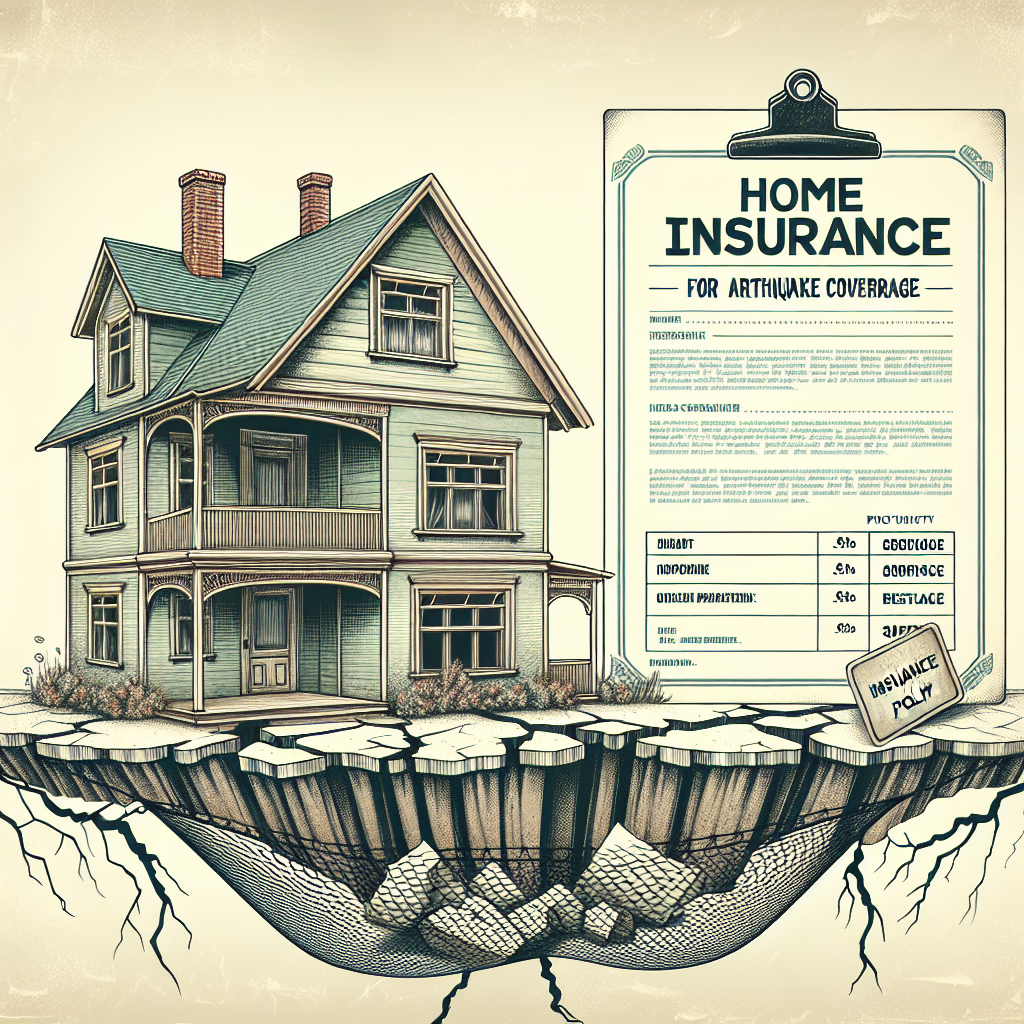Filed under Home Insurance on
Hippo Home Insurance Coverage Explained

Shopping for homeowners insurance can feel like translating a foreign language while juggling a dozen what‑ifs. You want enough protection to rebuild, replace, and recover—without paying for coverage you don’t need. This guide breaks down Hippo Home Insurance Coverage so you can understand how it works, what it commonly includes, and how to customize a policy to your home, risk profile, and budget. You’ll learn where modern features can help, where gaps may still exist, and how to make smart choices that stand up to real‑world claims.
Why a modern policy structure matters
Home insurance has evolved. Weather volatility, pricier building materials, and more electronics under one roof have changed both risks and repair costs. Insurers that lean into technology, proactive risk mitigation, and streamlined claims tend to deliver a more contemporary experience. That’s where Hippo Home Insurance Coverage often draws interest: it’s designed to reflect how people live today, not a decade ago. The goal is the same—protect your house, your stuff, and your financial liability—but the tools and options can look more forward‑leaning.
Homeowners coverage, explained in plain English
Most homeowners policies (including options from Hippo and its underwriting partners) are built around several core parts. Understanding each part helps you tailor limits and endorsements to your actual needs.
Dwelling (Coverage A)
This is the backbone of your policy. It pays to repair or rebuild your home’s structure after a covered loss, such as a kitchen fire, wind damage, or a burst pipe. The dwelling limit should reflect the cost to rebuild at today’s prices, not your home’s market value. If construction costs surge after a regional storm, a policy with extended or guaranteed dwelling coverage can keep you from coming up short.
- Covered examples: hail punching holes in your roof; a lightning strike frying your built‑in appliances; a tree collapsing onto your attached garage.
- Common exclusions: flood, earthquake, wear and tear, and maintenance problems like rot or mold from long‑term leaks.
Other Structures (Coverage B)
Fences, detached garages, sheds, and gazebos usually fall here. The default limit is often a percentage of your dwelling limit, but it can be adjusted if your detached structures are more valuable than average.
Personal Property (Coverage C)
This covers your belongings—furniture, clothing, electronics—whether they’re in your home or temporarily off‑premises. Many modern policies offer replacement cost for personal property, which is essential in a claims scenario. Actual cash value pays the depreciated amount; replacement cost pays what it actually costs to buy new items of like kind and quality.
- Sub‑limits apply to categories like jewelry, fine art, collectibles, and firearms. If you have high‑value items, schedule them individually to avoid surprises.
Loss of Use (Coverage D)
If a covered loss forces you to move out during repairs, this section helps pay for a hotel or temporary rental, extra meals, and related living costs. Confirm how your policy calculates these benefits (time limits vs. dollar limits) so you understand the cushion you have.
Personal Liability (Coverage E)
Liability protects your finances if someone is injured on your property or if you’re legally responsible for damage to others’ property. Limits of $300,000 to $500,000 are common, and many households benefit from going higher—especially if you have substantial assets or future earnings to protect.
Medical Payments to Others (Coverage F)
This is a small, no‑fault coverage designed to handle minor injuries sustained by guests on your property. It does not replace liability coverage, but it can help avoid small issues turning into larger disputes.
What often distinguishes Hippo’s approach
Every insurer has its angle. With Hippo Home Insurance Coverage, the differentiators generally center on modern risks and prevention:
- Proactive risk mitigation: Many policies encourage or include smart home sensors (e.g., water leak detectors) that can reduce claims severity. Industry studies consistently show that early leak detection cuts water damage losses—a major driver of claims across the U.S.
- Enhanced tech and home office coverage: With remote work now common, limits for electronics and home office equipment may be higher than legacy defaults. That can be a meaningful advantage if you rely on laptops, monitors, and peripherals.
- Optional add‑ons that target common gaps: Endorsements for water backup, service line, equipment breakdown, and cyber or identity protection are increasingly available, giving you a way to tailor beyond the standard homeowners form.
- Digital experience: Online quotes, app‑based policy management, and faster claims intake can shorten the distance between “uh‑oh” and “we’re on it.”
Availability and specifics vary by state and underwriting partner, so always review your quote and specimen policy. Still, the thread running through Hippo Home Insurance Coverage is a focus on modern risks, convenience, and early‑warning tech to keep small issues from becoming big claims.
Add‑ons worth considering
Endorsements can turn a good policy into a great fit. These are common upgrades homeowners explore with Hippo and other modern carriers:
Water Backup
Standard policies exclude water that backs up through sewers or drains or overflows from a sump. This endorsement fills that gap and is especially relevant for homes with basements or older municipal systems.
Service Line Coverage
Buried lines running to your home—water, sewer, power, data—can be your responsibility from the street to the house. If a tree root crushes a pipe, repairs can be thousands of dollars. Service line coverage typically handles excavation, repair, and landscape restoration.
Equipment Breakdown
Think of this as a mini “mechanical breakdown” policy for home systems and appliances when they suffer sudden electrical or mechanical failure. It’s not a warranty for wear and tear, but it can cover things like a shorted HVAC compressor.
Extended or Guaranteed Replacement Cost
Construction costs don’t stand still. An extended replacement endorsement (commonly 25% to 50% above your dwelling limit, where available) can be a financial lifesaver after a large catastrophe drives up prices and labor costs.
Scheduled Personal Property
Jewelry, art, and collectibles often need to be listed—or “scheduled”—for full protection. Scheduling typically removes sub‑limits, may widen covered perils, and often eliminates a deductible for those items.
Short‑Term Rental and Home‑Sharing
If you list your property on platforms like Airbnb, standard policies may not fully address that exposure. Look for endorsements tailored to short‑term rental activity to avoid coverage gaps.
Common exclusions and how to address them
No homeowners policy covers everything. Understanding what’s typically excluded helps you build a complete protection plan around Hippo Home Insurance Coverage or any comparable policy.
- Flood: Residential flood requires a separate policy, often through the National Flood Insurance Program or a private flood insurer. Even homes outside high‑risk zones experience flood claims; consider at least a basic policy.
- Earthquake: You’ll need a standalone earthquake policy or endorsement in states with seismic risk.
- Maintenance, wear and tear, mold: Insurance isn’t a substitute for upkeep. Regular maintenance and smart sensors can prevent many of these losses.
- Business activities: If customers visit your home or you store inventory there, you may need a business endorsement or separate policy.
- High‑value items: Without scheduling, sub‑limits can leave you underinsured. Appraisals and itemization are key for fine jewelry or art.
How much coverage do you actually need?
Right‑sizing your policy is easier if you break it into parts.
- Calculate your rebuild cost: Use your insurer’s replacement cost estimator, but also sanity‑check. Factors include square footage, local labor rates, architectural style, and special features. If you’ve upgraded kitchens, baths, or built‑ins, make sure those costs are reflected.
- Set personal property limits: A quick home inventory—photos or a spreadsheet—is invaluable. Many households underestimate the value of clothing, cookware, and electronics. Replacement cost coverage is recommended for most people.
- Choose liability limits: Consider your savings, home equity, and future earnings. Many households benefit from at least $500,000 liability, and a personal umbrella policy can extend protection into the millions for a modest premium.
- Dial in your deductible: Higher deductibles can lower premiums significantly. Match the deductible to your emergency fund so a claim doesn’t strain your cash flow.
- Add key endorsements: At minimum, evaluate water backup, service line, and equipment breakdown. They address outsized repair costs that standard policies skip.
- Account for inflation: Look for inflation guard and evaluate extended replacement cost to keep pace with volatile building costs.
Pricing factors and ways to save
Home insurance pricing is driven by risk. Underwriters consider your home’s location, age, roof type, proximity to fire protection, past claims, and more. Broad industry trends—like higher reinsurance costs and climate‑driven losses—have pushed premiums upward in many states. While you can’t control the weather, you can influence your home’s risk profile.
- Roof and systems: Newer roofs and updated plumbing or electrical reduce loss potential. Document upgrades and share them during quoting.
- Smart devices: Leak sensors, monitored alarms, and temperature monitors can earn discounts and prevent claims. Carriers focused on prevention, including Hippo, often recognize these with credits.
- Bundle when sensible: If available in your state, bundling home and auto can help. Compare the bundle discount to standalone pricing to confirm the real savings.
- Claims history: Small frequent claims can raise rates. Consider paying out of pocket for minor incidents below or near your deductible to preserve your loss‑free discount.
- Credit‑based insurance scores: In many states, better credit correlates with lower premiums. Responsible credit habits can indirectly reduce your insurance costs where permitted.
Independent research from insurance trade groups and analytics firms shows that water damage and wind remain leading causes of loss nationwide. That’s why mitigation—better roof materials, leak detection, and defensible space in wildfire zones—can move the pricing needle and improve insurability.
How claims typically work
When something goes wrong, speed and documentation matter. While processes vary by carrier and state, claims flow is generally similar across the industry.
- Safety first: Stop ongoing damage. Shut off the main water valve, tarp the roof, or board broken windows as needed. Keep receipts for any emergency repairs.
- Document everything: Take photos and video of the damage before cleanup. Create a list of affected items with make, model, and approximate purchase dates.
- File promptly: Digital claims intake is faster and starts the clock. With Hippo Home Insurance Coverage, app‑based or online reporting may streamline the first notice of loss.
- Adjuster assessment: A claims professional will evaluate coverage, scope repairs, and may provide an advance for immediate needs. Be transparent and organized—your documentation speeds approvals.
- Repairs and payment: You might have the option to use a preferred contractor network. Final claim payments typically include a holdback if your policy pays replacement cost; the withheld amount is released after repairs are completed.
Pro tip: If you disagree with a scope or estimate, request a reinspection or provide competing contractor bids. Clear, courteous communication often resolves gaps without escalating.
Real‑world scenarios
Hidden leak behind a dishwasher
You discover warped flooring. A plumber finds a supply line leak. With a standard policy plus water backup and equipment breakdown endorsements (where applicable), you may have coverage for tearing out and replacing damaged materials and, if the appliance suffered a covered breakdown, for repair or replacement. Smart leak sensors can shorten detection time, often reducing both damage and disruption.
Hailstorm pummels your roof
An adjuster confirms functional hail damage. Your dwelling coverage pays for replacement, less your deductible. If matching materials are an issue, some policies include matching provisions or endorsements so you don’t end up with a patchwork roof; ask your insurer how matching is handled in your state.
Package theft from the porch
Personal property coverage can respond to theft, even off‑premises, subject to your deductible and policy terms. Filing a police report and providing order receipts will help substantiate the loss. Consider increasing your personal property limit or adding special coverage for high‑ticket electronics.
Guest injury on your steps
A visitor slips and fractures a wrist. Medical payments can address initial treatment costs, and personal liability may protect you if you’re found negligent. Document maintenance (e.g., timely snow removal) to bolster your position.
Expert guidance and industry context
Consumer education groups and industry sources like the Insurance Information Institute and state insurance departments consistently emphasize three points:
- Underinsuring the dwelling is common: Rebuild costs can be 15% to 30% higher than homeowners expect due to code upgrades, debris removal, and inflationary spikes after catastrophes.
- Water is a major culprit: Non‑weather water losses (leaks, backups) are frequent and expensive. Prevention tech and targeted endorsements pay for themselves over time.
- Documentation wins claims: Up‑to‑date inventories and photos reduce friction when substantiating losses, especially after total or large partial losses.
Modern carriers have leaned into these realities. By aligning your policy with these principles, you’ll be better positioned to weather both small mishaps and large disasters.
How to compare policies effectively
Side‑by‑side comparisons beat gut feelings. Use this checklist when evaluating Hippo Home Insurance Coverage versus other options:
- Policy form and perils: Are you getting open‑perils coverage on the dwelling and personal property, or named perils on personal property? The difference matters.
- Replacement cost vs. actual cash value: Confirm replacement cost on both the dwelling and contents. Avoid ACV for contents if possible.
- Endorsements included: Are water backup, service line, and equipment breakdown bundled or optional? What are the limits?
- Extended replacement cost: What percentage applies, and are code upgrades covered?
- Sublimits: Jewelry, electronics, bicycles, collectibles—what are the caps, and do they reflect your lifestyle?
- Claims experience: Is there access to vetted contractors? How are matching materials handled? Are there 24/7 reporting options?
- Risk mitigation: Are smart devices encouraged or discounted? Does the carrier offer home checkups or virtual inspections?
- Financial stability and availability: Confirm the underwriting company’s ratings and whether coverage is offered in your state.
Fine‑tuning for special situations
Remote work and small businesses at home
Higher limits for home office equipment can be a plus, but if clients visit your home or you store inventory, consider a business endorsement or a separate policy. Clarify what’s covered and what isn’t.
Older homes and code upgrades
Historic or older homes may face higher costs due to code compliance. Ordinance or law coverage pays for bringing undamaged parts of the home up to code during repairs. Make sure limits reflect local building requirements.
Wildfire, wind, and coastal exposures
In higher‑risk zones, carriers may require mitigation steps—ember‑resistant vents, Class A roofs, cleared defensible space, impact‑rated windows. These improvements reduce risk and may be necessary for eligibility or discounts.
FAQs about Hippo Home Insurance Coverage
- Is smart home equipment required? It depends on the state and policy. In many cases, devices are optional but incentivized with discounts and loss‑prevention benefits.
- Can I customize my electronics limits? Typically yes; confirm base sublimits and ask about higher caps or scheduling valuable devices.
- Does the policy cover short‑term rentals? Not by default. Ask about a home‑sharing or short‑term rental endorsement if you host.
- How are claims paid on contents? Replacement cost coverage pays you the depreciated amount first, then releases the holdback when you replace the items, subject to policy terms.
- What about floods and earthquakes? Both generally require separate policies or endorsements; standard homeowners coverage excludes them.
A quick step‑by‑step to get a stronger quote
- Gather home data: Square footage, year built, roof age and type, updates to plumbing/electrical/HVAC, and any special features.
- List valuables: Jewelry, instruments, collectibles—note appraisals and purchase details to schedule items if needed.
- Inventory your tech: Laptops, gaming systems, smart TVs. Make sure limits match reality, especially for remote work households.
- Decide on deductibles: Choose a number aligned with your emergency fund, and consider a separate wind/hail deductible if offered.
- Pick endorsements: Water backup, service line, equipment breakdown, and extended replacement cost are high‑impact adds for many homes.
- Ask about mitigation credits: Leak sensors, alarm monitoring, fire suppression, roof shape or materials—every detail can help.
Balancing cost and protection
There’s no one‑size‑fits‑all answer. A thoughtful approach is to secure robust coverage for high‑severity, lower‑frequency events—house fires, major water loss, liability claims—while raising deductibles for low‑severity, higher‑frequency issues you could self‑fund. Hippo Home Insurance Coverage can be configured along this philosophy: strong limits for big risks, strategic endorsements for common gaps, and smart devices to help head off losses.
Signs you’ve built a resilient policy
- Your dwelling limit is tied to rebuild costs, not market value, with extended replacement cost in place.
- You have replacement cost on contents and have scheduled valuable items.
- Water backup and service line endorsements are included, matching realistic loss scenarios.
- Liability is at least $500,000, with an umbrella policy considered if you have meaningful assets.
- Smart leak detection and monitored security are installed and documented with your insurer.
- Your deductible aligns with your emergency fund, not wishful thinking.
The bottom line
Great homeowners insurance anticipates the most likely losses, covers the most financially catastrophic ones, and gives you tools to prevent problems in the first place. Hippo Home Insurance Coverage aims at that intersection, pairing modern endorsements and technology with the traditional backbone of a homeowners policy. The result, when tailored thoughtfully, is a plan that fits how you actually live.
If you’re comparing options now, use this guide as a checklist. Confirm rebuild costs, opt for replacement cost on contents, evaluate water and infrastructure endorsements, and decide on deductibles that make sense for your finances. Then ask how prevention tech and updated home systems can earn you credits while lowering risk. With those pieces in place, Hippo Home Insurance Coverage can be a strong contender in a market where the details—and your documentation—make all the difference.





